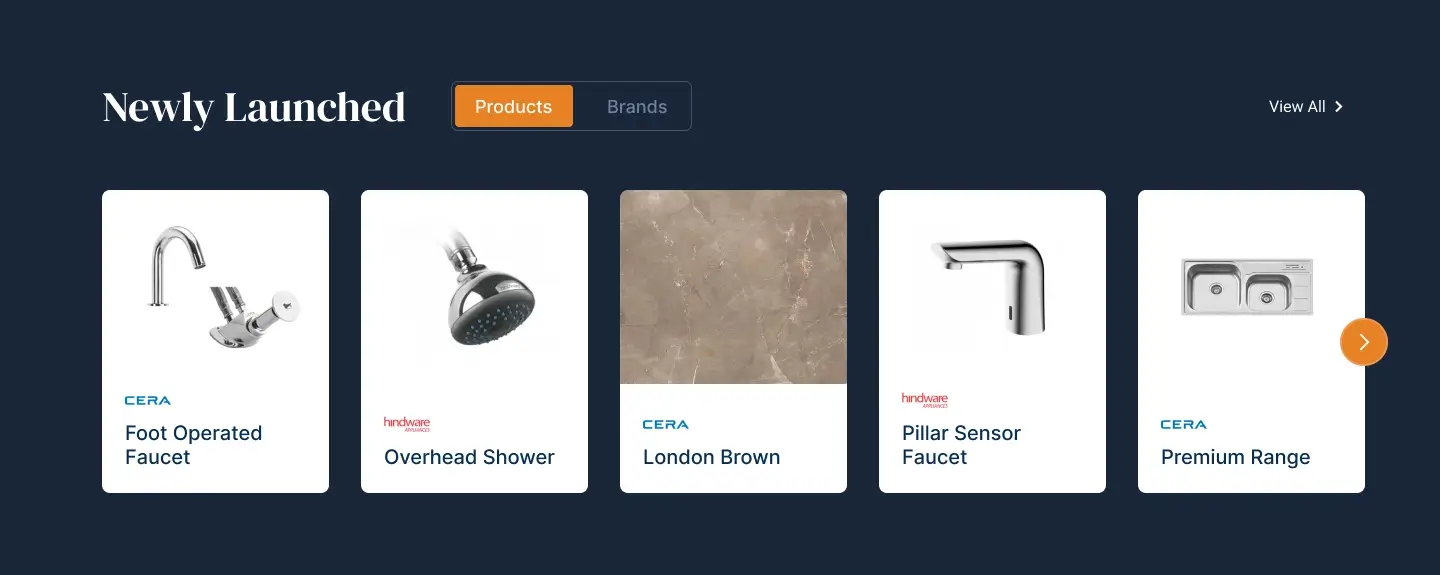
Table of Contents
Quick Review
- A well-chosen vegetable slicer saves time and makes meal preparation easier.
- A good slicer cuts vegetables evenly, is safe to handle, and easy to clean and maintain.
- Key factors to consider when choosing a vegetable slicer include:
- Type of slicer – manual or electric.
- Blade material and sharpness.
- Interchangeable blade cartridges for a variety of cutting styles.
- Adjustable control over slice thickness.
- A balance of safety, ease of use, and durability.
- Safety features such as a food holder and ergonomic design for comfort and control.
- Ease of cleaning and dishwasher compatibility.
Choosing the best vegetable slicer can save time in the kitchen and make meal prep easier. With wide array of vegetable slicer, from handheld mandolines to multi-blade choppers and even electric models, it helps to focus on what matches everyday cooking needs. The best vegetable slicer is the one that balances safety, ease of use, and the right features for the types of meals a person prepares most often.
A good slicer should cut vegetables evenly, clean up without hassle, and feel safe to handle. Some models work better for quick salads, while others handle tougher jobs like slicing root vegetables or dicing onions. Therefore, the right choice depends on how often it will be used and what types of cuts are most useful.
This guide explains the key factors to look at before buying, highlights the features that matter most, and covers simple maintenance and safety tips. With the right slicer, anyone can speed up prep work and enjoy consistent results in the kitchen.
Key Factors to Consider When Choosing the Best Vegetable Slicer
The most important quality of a vegetable slicer is that it should cut neatly and handle different textures. It should be safe and easy to use without slowing down food preparation. The right choice depends on blade quality, design type, flexibility in cuts, and control over slice thickness.
Types of Vegetable Slicers
Vegetable slicers are mainly categorized as manual and electric. Manual slicers, such as handheld mandolines, are compact and budget-friendly. They work well for small kitchens but require more effort and attention to safety.
Electric slicers save time and are better for frequent cooking or larger families. A multifunctional electric vegetable slicer can slice, dice, and shred with minimal effort, making it practical for both home and commercial use.
The choice of a vegetable slicer hugely depends on usage frequency of the slicer and the volume of food prepared. Manual models are suitable for light cooking, while electric versions make your task quick and easier in bulks.
Blade Material and Sharpness
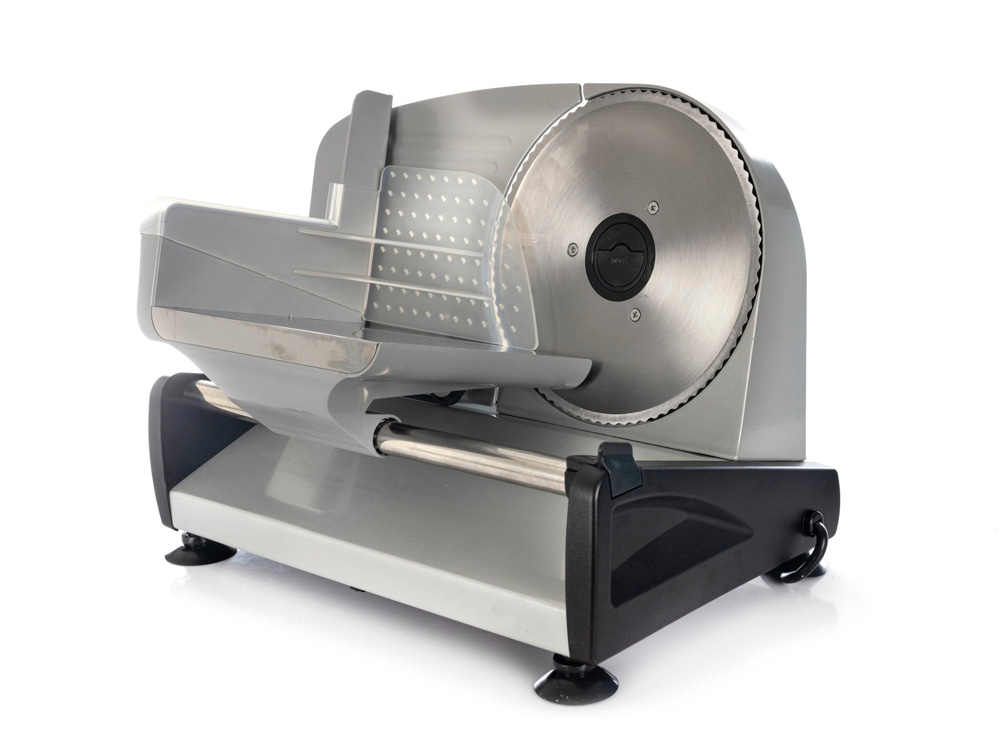
The blade is the most important part of a slicer. Stainless steel blades resist rust, hold sharpness longer, and handle both soft and firm vegetables. Ceramic blades stay sharp for a long time but can chip if dropped.
A sharp blade reduces the need for force, which lowers the chance of slipping. Dull blades not only slow prep but also create uneven cuts. For frequent use, stainless steel is the most dependable choice.
Some slicers feature hardened steel that stays sharper under heavy use. This is useful for cooks who prepare large batches of food. A well-designed blade is the one that is easy to clean without trapping food particles.
Interchangeable Blades and Versatility
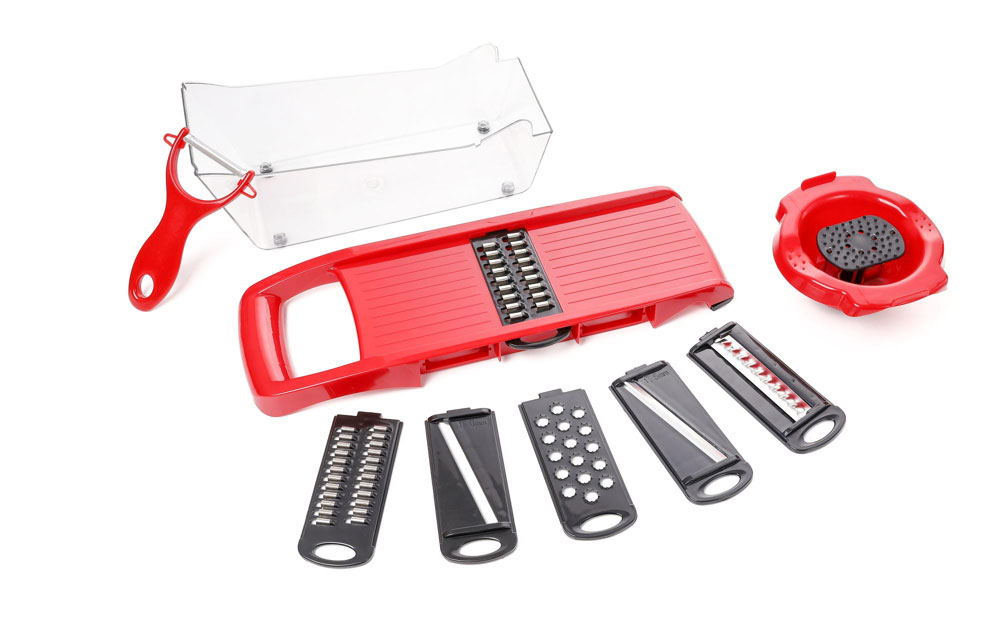
A versatile slicer should be capable of cutting in more than one style. Interchangeable blades allow straight slices, julienne strips, or crinkle cuts. This flexibility reduces the need for multiple tools in the kitchen.
Some models include blade cartridges that swap in seconds, which saves time during meal prep. Others require more effort to change, which can slow down cooking.
Versatility also matters for different vegetables. A strong blade system should handle firm potatoes as easily as soft tomatoes. This makes the slicer useful for a wider range of meals.
Adjustable Slicing Thickness
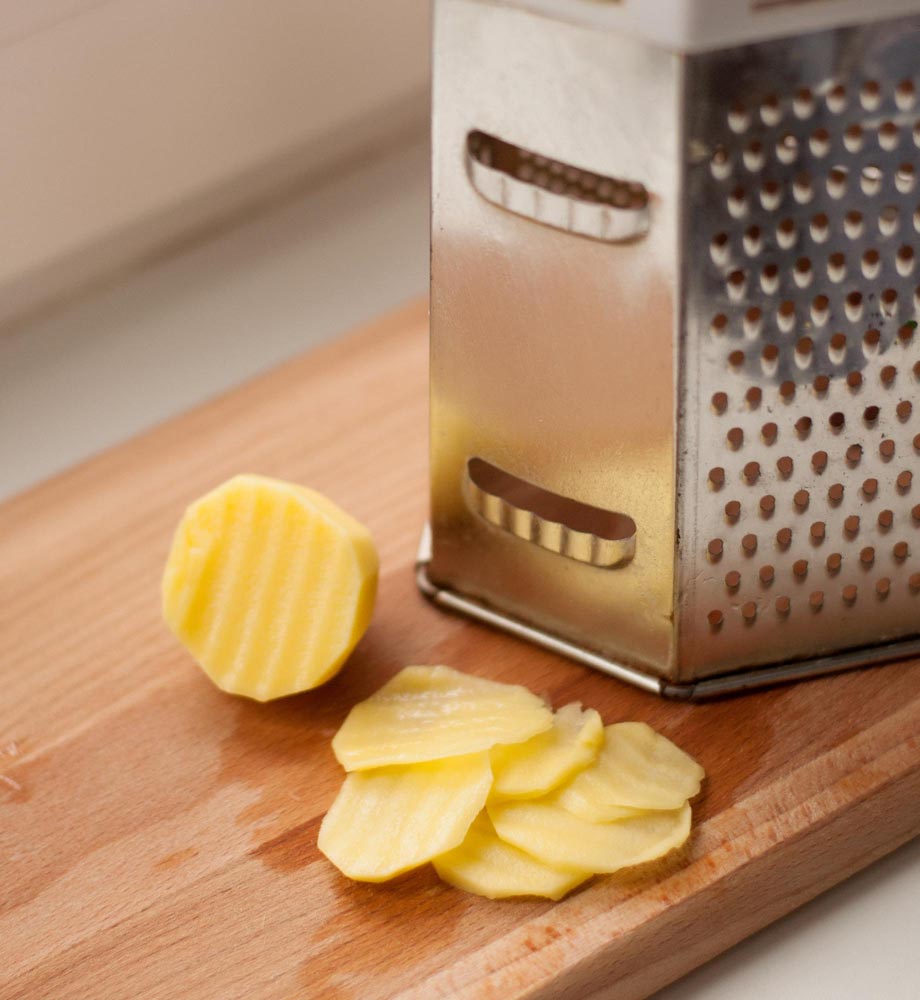
Control over slice thickness helps improve both presentation and cooking results. Thin slices work best for salads, while thicker cuts suit stews or stir-fries. A good slicer offers multiple thickness settings that adjust quickly and swiftly.
Manual slicers often use a dial or sliding plate to change thickness. Electric models may include preset options for faster adjustments.
Consistent thickness also helps food cook evenly. Uneven cuts can leave some pieces overcooked while others remain raw. A slicer with a clear adjustment system avoids this problem and makes cooking preparation efficient.
Basic Features, Maintenance, and Safety Considerations
A vegetable slicer should be safe to use, easy to handle, and durable. The right kitchen tool should also fit the available space and store neatly without adding clutter.
Safety Features and Ergonomic Design
Safety matters most in any kitchen tool that uses sharp blades. A good slicer should include a food holder or guard to keep hands away from the blade during slicing, dicing, or grating. Non-slip bases or suction feet also prevent movement on the counter, which reduces accidents during meal preparation.
Ergonomic design improves comfort and control. A handle shaped to fit the hand reduces strain during longer food preparation sessions. This design also helps maintain steady pressure, which creates more uniform cuts.
Some slicers include adjustable thickness settings with secure locks. These keep the blade stable and prevent sudden slips. A clear and simple adjustment system also reduces the chance of misuse.
Ease of Cleaning and Dishwasher Safe Parts
Ease of cleaning makes daily use more practical. A slicer with removable blades and trays allows users to rinse or scrub each part without difficulty. Smooth surfaces without deep grooves help prevent food from sticking, which lowers the risk of bacteria buildup.
Dishwasher-safe parts save time and encourage regular cleaning. However, smaller pieces such as blades may last longer if washed by hand. A quick rinse right after use also prevents dried food from becoming difficult to remove later.
Maintenance tips often include drying blades fully before storage. This prevents rust and keeps edges sharp for longer. A slicer that breaks down into fewer parts also speeds up cleaning and reassembly.
Durability and Build Quality
Durability depends on both materials and construction. Stainless steel blades usually stay sharp longer and resist rust compared to softer metals. A sturdy frame made from BPA-free plastic or metal holds up better under frequent use.
Build quality also affects performance. A slicer with a solid base will not wobble or bend under pressure. Loose joints or thin plastic parts often lead to uneven cuts and shorter tool life.
A well-made slicer should handle a range of tasks such as chopping, grating, and dicing without dulling quickly. Users who prepare large quantities of vegetables benefit most from a tool that maintains its sharpness and strength.
Storage, Size, and Compact Design
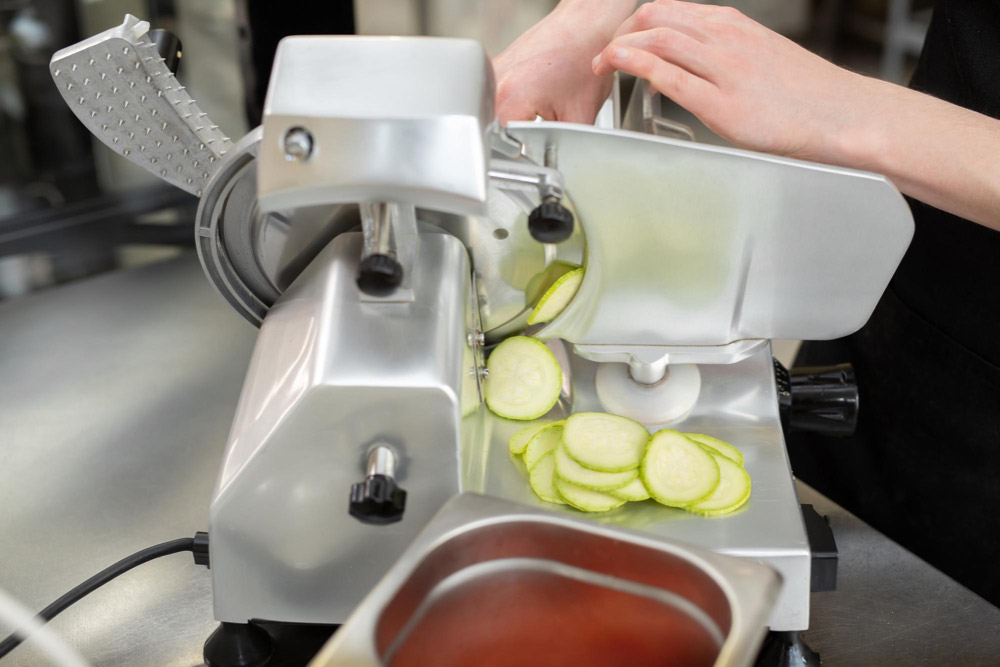
Storage plays a big role in how often a slicer gets used. A compact design fits more easily in a drawer or small cabinet, while larger slicers may require a dedicated shelf. Some models include blade storage compartments that keep sharp parts contained and safe.
Size also affects convenience during meal preparation. A smaller slicer works well for quick tasks like slicing cucumbers, but a larger surface may be better for shredding cabbage or preparing bigger batches.
Stackable parts or foldable handles reduce clutter in the kitchen. A slicer that balances compact storage with enough cutting surface offers the most flexibility for different cooking needs.
Conclusion
Choosing the right vegetable slicer depends on how often someone cooks, the types of meals they prepare, and the level of convenience they want. A simple handheld tool may suit small kitchens, while an electric model may fit larger households that prepare food more often.
Key features such as blade sharpness, safety guards, and ease of cleaning make a big difference in daily use. A slicer that balances these factors will save time and reduce effort without adding unnecessary complexity.
Compare manual, mandoline, and electric options, and then choose the one that suits your cooking style. The best choice is the one that feels safe, practical, and efficient for their everyday kitchen needs.
Also Read: Modular Kitchen Appliances: That’ll Make your Life *way* Easier
Best Vegetable Slicer FAQs
01. What are the qualities of the best vegetable slicer?
The best vegetable slicer cuts vegetables evenly, is safe to use, and easy to clean and maintain. It saves time and makes cooking more efficient.
02. What are the types of vegetable slicers?
Vegetable slicers are mainly of two types: manual and electric. Manual slicers are suitable for light cooking, while electric slicers are ideal for bulk cutting.
03. Which is the best blade material for a slicer?
Stainless steel blades are the best as they resist rust, stay sharp for longer, and work well with both soft and firm vegetables.
04. What safety features should I look for when selecting a vegetable slicer?
A good slicer should include a food holder or safety guard to keep hands away from the blade while slicing, dicing, or grating. Comfortable ergonomics and a stable grip are also important for safety and control.
05. Are vegetable slicers dishwasher-safe?
Not all slicers are fully dishwasher-safe, but some parts can be washed in a dishwasher. It’s best to rinse the blades immediately after use to prevent food from drying and sticking.



